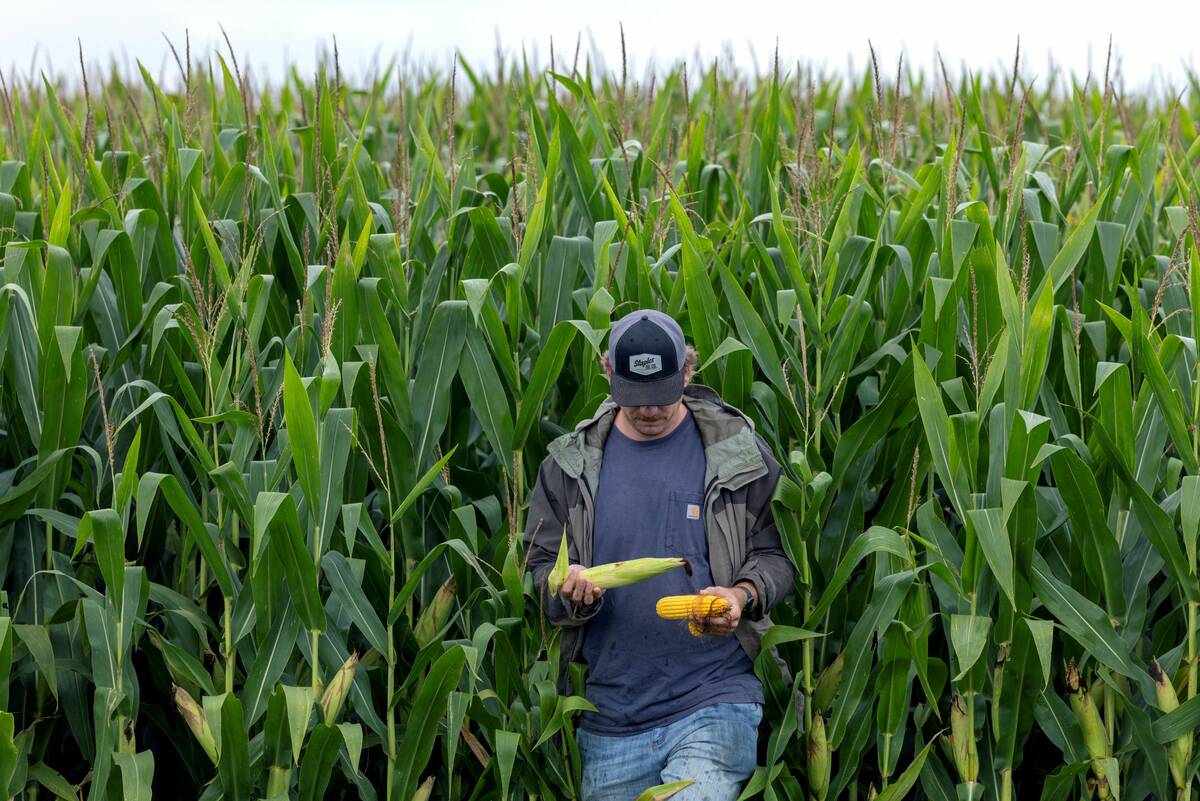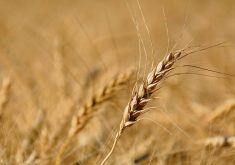CNS Canada — Prairie farmers are in the final stages of harvesting the 2015 wheat crop, and while yields continue to beat earlier expectations, there’s a distinct quality difference between crops harvested early and those harvested late.
“In our country, all of the grain was top grade, but anything that was left out at this stage is probably a No. 3,” said Bill Craddock, a Manitoba farmer and local trader.
That sentiment is even more pronounced in Saskatchewan and Alberta.
“The first half of harvest had quality patterns in the top tier,” said market analyst Jon Driedger of Farm Link Marketing Solutions.
Read Also

The U.S. corn crop could be the biggest ever. That’s terrible news for America’s farmers.
The USDA predicts a record corn crop for U.S. farmers, who question the agency’s accuracy amidst high debt and low crop prices.
However, while the early-harvested wheat was generally hitting No. 1 or No. 2 quality levels, the last half was hit by rain and a good portion of that will grade No. 3 or lower.
The question now is how much will be pushed all the way down into feed-grade and how much is still salvageable for milling quality, said Driedger. “The longer this drags out, the worse it gets.”
However, grade spreads for the good-quality early-harvested wheat are not widening out as much as could be expected, with the trade still feeling it will be able to work with the supplies available, he said.
The supply of good-quality grain is still better than last year when there was more widespread degradation, said Neil Townsend, director of market research services at G3 Canada, formerly CWB.
Looking at durum as an example, Townsend noted fewer than a million tonnes made the top two grades in 2014. This year, there will likely be over two million tonnes hitting No. 1 and No. 2, despite the late quality problems, according to Townsend. As a result, there should be enough of the top grades to meet the demand.
Feed supplies may be larger than average, but are also not considered burdensome.
“There will be lots of opportunities for blending this year,” according to Townsend.
One “interesting dilemma” with the 2015 crop is that that the early-harvested supplies were seeing very high proteins, he said.
However, there is only a relatively small market for the highest-protein wheat, with the remainder being blended in some fashion. “Sometimes they’ll be blending down (for protein), and sometimes blending up (for quality).
“There’s no big gap in the world that people have to come to Canada, so Canada has to find business,” said Townsend. “We have our good milling customers and then we have everybody else; we’ll have to do a lot of that ‘everything else’ to get this crop moved.”
— Phil Franz-Warkentin writes for Commodity News Service Canada, a Winnipeg company specializing in grain and commodity market reporting. Follow CNS Canada at @CNSCanada on Twitter.













